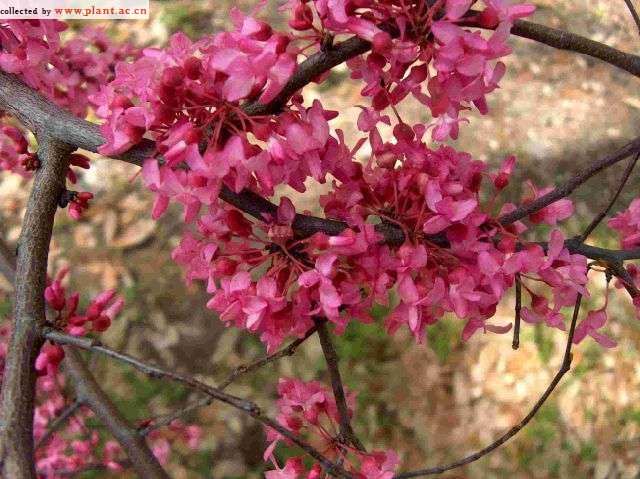Cercis reniformis OklahomaRedbud
科:蝶形花科
Family:fabaceae
属:紫荆属
common name:Redbud
introduce:Plant Type: Tree
Family: Fabaceae
Missouri Native: No
Native Range: None
Height: 12 to 18 feet
Spread: 15 to 24 feet
Bloom Time: April
Bloom Color: Wine-red
Sun: Full sun to part shade
Water: Medium moisture
Maintenance: Medium
General Culture:
Easily grown in average, medium moisture, well-drained soil in full sun to part shade. Part shade may be best in hot climates. Soils should not be allowed to dry out in full sun. Since this tree does not transplant well, it should be planted when young and left undisturbed. May not be reliably winter hardy throughout the St. Louis area where it should be planted in a protected location. 慜klahoma?is reportedly difficult to propagate vegetatively, which adversely affects is availability in commerce.
Noteworthy Characteristics:
慜klahoma?is noted for its bright wine red flowers (darker and brighter than the species and most other types of redbuds) and its glossy rich green foliage. It was discovered growing wild in the Arbuckle Mountains of Oklahoma in 1964. It is a small, deciduous understory tree which typically grows to 12-18?tall. Clusters of tiny, wine-red, pea-like flowers bloom profusely on the branches and mature trunks for 2-3 weeks in early spring (March-April) before the foliage emerges. Broad ovate, leathery leaves open soft pink but gradually mature to a glossy and waxy green. Pendulous, flat, bean-like, 2-4?long seed pods resembling snow peas appear after flowering. Fall color is variable, but often includes attractive shades of reddish-purple and orange. 慜klahoma?is synonymous with and sometimes sold in commerce as a cultivar of C. canadensis, C. canadensis var. texensis and C. canadensis var. mexicana.
Leaf anthracnose, dieback, canker and verticillium wilt can be a significant disease problems for redbuds. Potential insect pests include tree hoppers, leaf hoppers, caterpillars and scale.
Uses:
Excellent small tree for lawns, woodland gardens or naturalized areas. Effective planted as a specimen or in groups. Valued for both formal settings around the home and for informal scattering in woodland margins.
